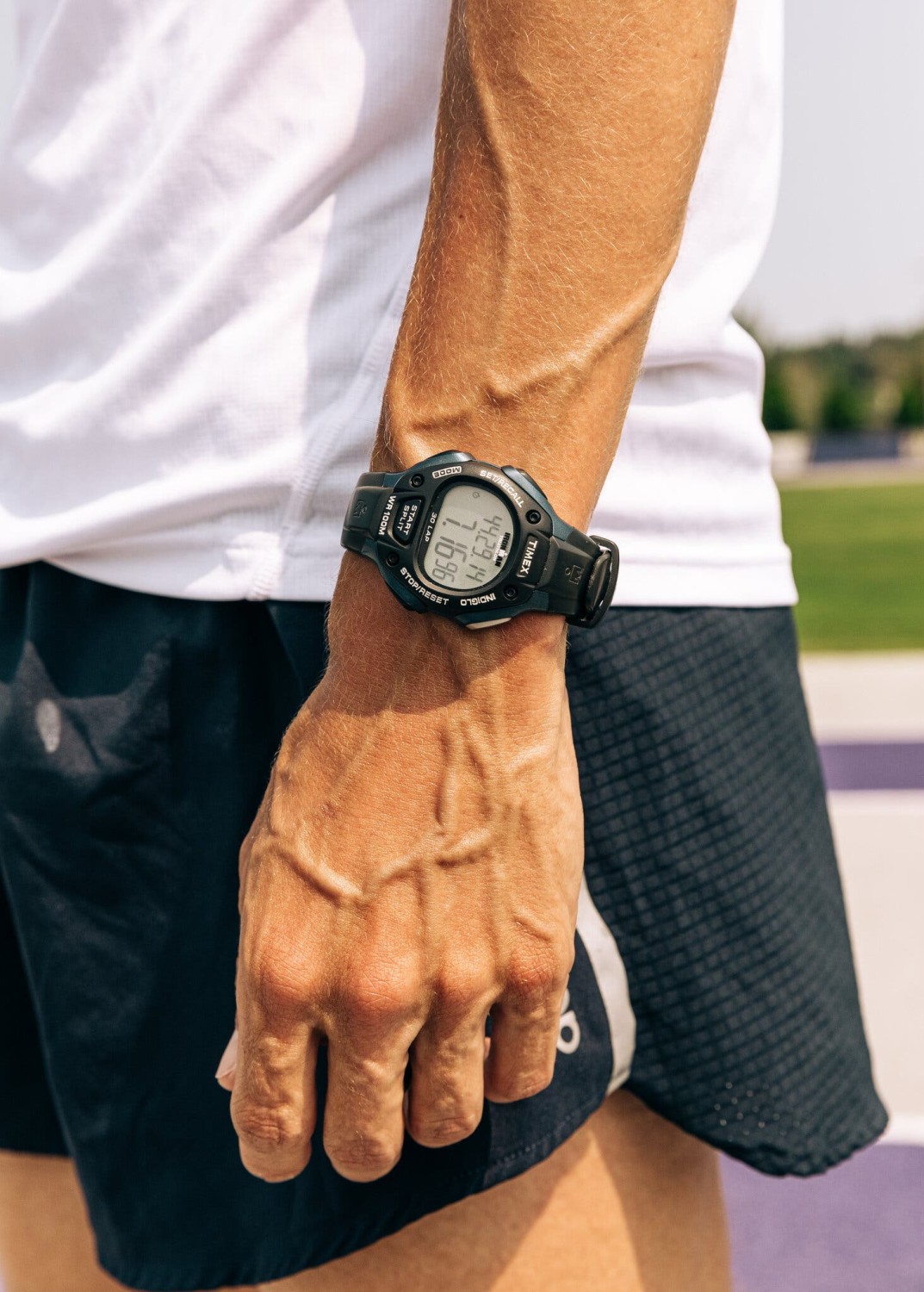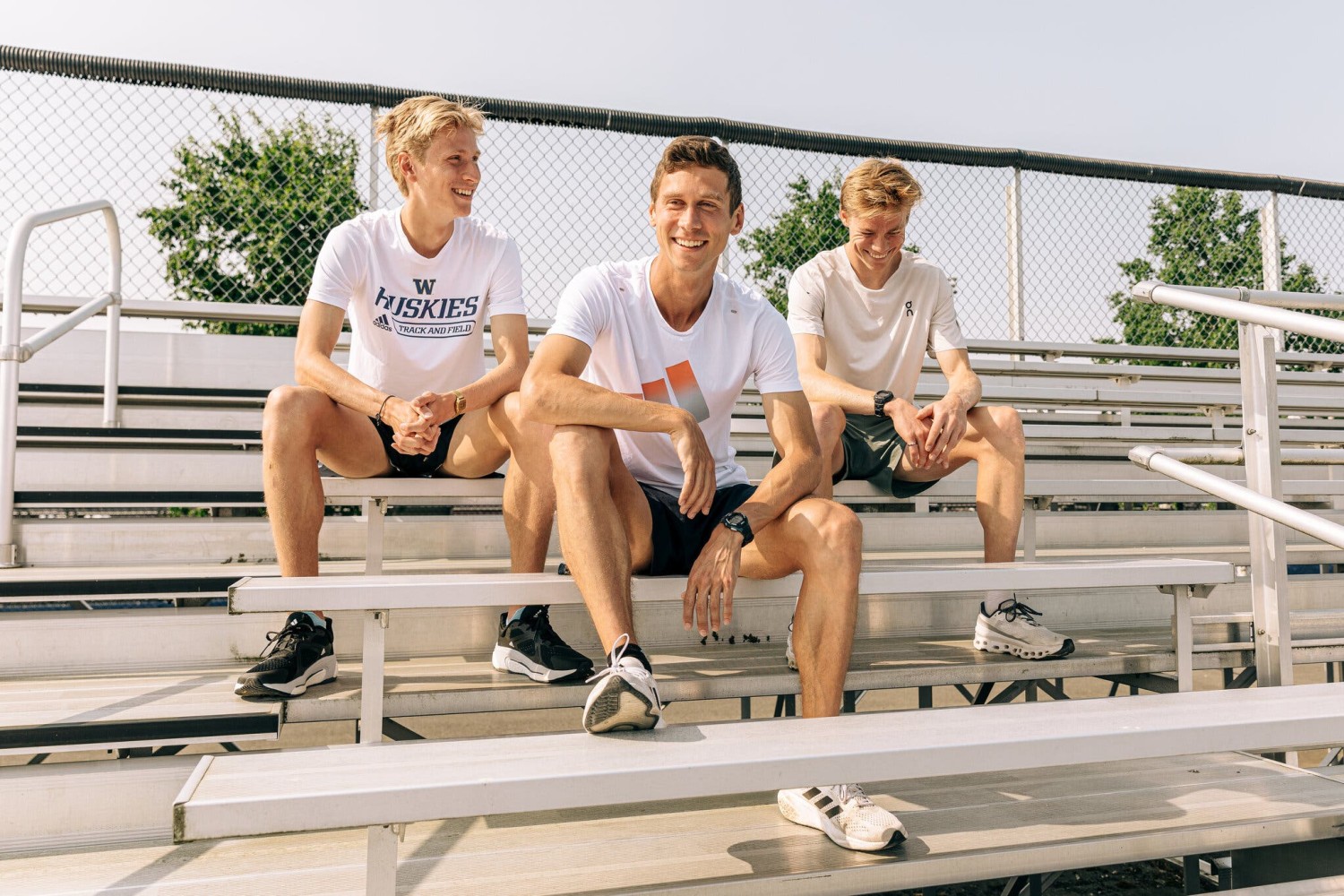GPS Watch? No Thanks. Top Runners Are Ditching the Data.
An increasing number of elite distance runners think they are better off without activity tracking watches.

As a decorated college runner at Notre Dame and then at the University of Tennessee, Dylan Jacobs dabbled with a device that many of his teammates considered indispensable.
But on those rare occasions when Jacobs succumbed to peer pressure and slapped a GPS watch around his wrist, he almost immediately remembered why he had resisted the temptation in the first place.
“The runs just felt so much longer,” said Jacobs, 23, a three-time N.C.A.A. champion who recently turned pro. “That was one of my main problems with it. I wasn’t enjoying myself or looking around. Instead, I was kind of looking at the watch every quarter-mile to see how much longer I had left.”
GPS watches — popular brands are Garmin, Suunto and Coros — come equipped with satellite technology and heart rate monitors to produce a buffet of functions. Want to know how far and how fast you’ve run, or how many milliliters of sweat you dumped in Central Park last weekend? How about your average stride length? Your cadence? The list goes on.

“I would just let it die all the time, and I’m super lazy with that kind of stuff,” she said.
Second, MacLean realized her watch was draining the fun from her runs. It was especially apparent to her during a low-key stretch when she was simply trying to build fitness.

"I hated that every run I went on, I felt like I had to check my pace and my distance and whatever else,” she said. “So I just decided that I was going to lay off it for a while and switch to a regular watch.”
She never went back. MacLean, 28, who now wears an Armitron Dragonfly that she said she picked up for $10 at Walmart, acknowledged that there were certain workouts when a GPS watch would come in handy, like when she did a tempo run by herself. (Tempo runs are faster than easy jogs, and frequently run at a prescribed pace.) But Mark Coogan, her coach, has long prioritized effort over pace, and MacLean logs her training in minutes rather than in miles.
“I know I’m at the elite level now, so not everything is going to be joyful,” MacLean said. “But when there are things that bring me a lot of joy, I’m going to invest in them. And one of those things is the ability to avoid focusing on my pace during my runs.”
For many, GPS watches are a remarkably useful training tool. But there are other runners, including world-class runners like Jacobs, who have a hard time understanding the fuss. To them, a smorgasbord of data is more hindrance than help. And get this: Some runners don’t wear watches at all.
“I like to focus more on the feel of everything and not worry too much about the time,” Jacobs said.
Heather MacLean, an Olympic 1,500-meter runner, recalled a period of her life when she enjoyed the utility of a GPS watch. As a student at the University of Massachusetts, she grew to understand the value of sleep — and more important, that she was not getting enough of it — while working in a neuroscience laboratory. So she began using a Garmin Forerunner to monitor her rest and adjust her schedule.
Later, as a first-year pro with Team New Balance Boston, MacLean tried to be consistent about wearing a GPS watch but was hampered by a couple of issues. First, she was always forgetting to charge it.
Without the pressure of feeling as if she needs to account for every mile — or, perish the thought, post her workouts for public inspection on Strava, the exercise-tracking platform — MacLean has also gotten better about listening to her body. She has no qualms about bailing on an extra workout if she is feeling beat.
“And I’ll tell Mark that I’m going for a walk instead,” MacLean said. “And he’s like, ‘OK!’”

Sam Prakel was a high school standout in Versailles, Ohio, when the assistant coach of his cross-country team introduced him to the magic of GPS watches. Prakel invested in one. It was a mistake from the start.
“I just started running too fast on all my runs,” Prakel said, “and it became harder to recover from them because I was so focused on my pace. I learned pretty quickly that it wasn’t good for me.”
Prakel opted instead for a Timex Ironman, which he wore through his freshman year at the University of Oregon. When the band snapped in his sophomore year, he ordered another. Prakel, 28, has worn the same no-frills watch ever since — through his time at Oregon, where he was a five-time all-American, and in more recent years as a pro miler for Adidas. He has never needed to change its battery.
The reigning U.S. indoor champion in the men’s 1,500 and 3,000 meters, Prakel has a system that works for him, which is a throwback in a sense. What did any runners do before the advent of GPS watches? They estimated. In Prakel’s case, a 65-minute run is roughly equivalent to 10 miles and a half-hour jog is good for four miles. He does not need to be precise.
“As long as I do the same things every week and keep it consistent, that’s all that matters,” he said, adding: “I feel like I’m in a better place when I don’t have all that data to worry about.”

For some runners, aesthetics also matter. Luke Houser, a junior at the University of Washington who won an N.C.A.A. championship in the men’s indoor mile last winter, wears a vintage-inspired Casiowith a digital display and a gold metal band. His teammates simply refer to it as “the gold Casio.”
“I just think it looks cool,” he said. “I’ve never been interested in cadence or heart rate, which I don’t think is ever that accurate anyway. All you need to know is how you feel and the time. That does the job.”
Kieran Lumb, who recently broke his own Canadian record in the men’s 3,000 meters, is well aware that he is the type of person who is susceptible to the sweet lure of data.
At the University of British Columbia, Lumb majored in electrical engineering. Later, while running at Washington, he earned a master’s degree in information systems. And for the longest time, no one who knew him was surprised that he maintained an Excel spreadsheet to catalog his sleep, workouts and something he called “rated perceived fatigue.”
“Just trying to do a little bit of data science on myself,” he said.

The twist is that Lumb, 25, who now runs professionally for the athletics apparel brand On, has not worn a GPS watch since he was a competitive cross-country skier growing up in Canada. He made the switch as a college freshman to a Casio calculator watch that didn’t even have a proper lap function for track workouts.
“So I’d just have to remember all my splits,” he said, “and it was awesome.”
Lumb noted that because many runners are naturally competitive, they can become obsessed with numbers. And the business of making it to the top of the heap as an elite runner can be especially taxing.
As a result, Lumb’s coach, Andy Powell, tries to keep things as simple as possible. For Lumb, that has meant ditching his Excel folder in favor of Powell’s old-school approach: weekly workout sheets that his runners fill out and file in three-ring binders.
“There’s something nice about slowing down and writing it by hand that I find almost endearing,” Lumb said. “It’s taken a while for me to be less neurotic, but it’s liberating.”

Scott Cacciola has covered sports for The Times since 2013. More about Scott Cacciola
A version of this article appears in print on Sept. 16, 2023, Section B, Page 7 of the New York edition with the headline: GPS Watch? No Way. Some Elite Runners Are Ditching the Data.. Order Reprints | Today’s Paper | Subscribe
<p>After sparking fears among fans by posting a series of crying photos, Justin Bieber has taken to social media with a huge announcement.</p>
Kendrick Lamar Beat Drake By Being Drake
How Kendrick Lamar and Drake changed rap beefs forever Rapid-fire releases and fast pace of modern life elevate diss war to levels unparalleled in hip-hop history.
UN assembly urges Palestine membership after vote
Taylor Swift concert photo horrifies internet
Island nation erupts into violence, three dead
Sean 'Diddy' Combs asks judge to reject lawsuit alleging rape of 17-year-old girl in 2003
Ukraine finds itself in a grave situation. Russia appears to be advancing
Ellen to make TV comeback after two years
How the West's plan to punish Russian oil backfired
